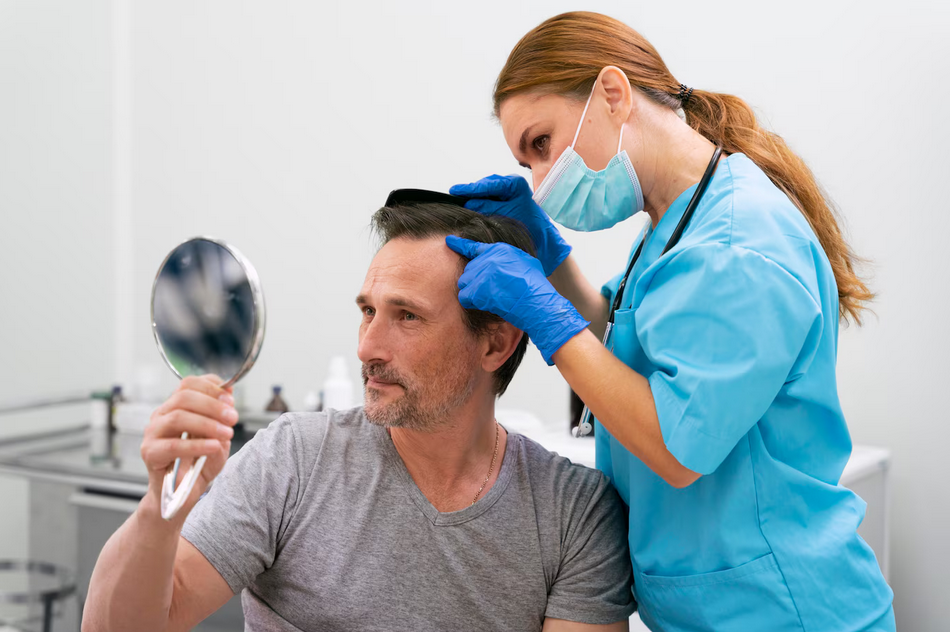Hair loss affects millions worldwide and can profoundly impact self-esteem and quality of life. Traditional treatments, ranging from medications to hair transplants, have limitations such as side effects, invasiveness, or inconsistent results. In South Korea—a leader in aesthetic medicine and regenerative therapies—a promising non-surgical breakthrough is gaining attention: exosome therapy for hair loss.
What Are Exosomes and How Do They Help with Hair Loss?
Exosomes are tiny, cell-derived vesicles packed with signaling molecules like proteins, growth factors, and microRNAs. These molecules play crucial roles in cell communication and tissue regeneration. When applied to the scalp, exosomes can:
- Stimulate dormant hair follicles to re-enter the growth phase (anagen phase)
- Enhance proliferation of dermal papilla cells, which regulate hair growth cycles
- Promote angiogenesis (formation of new blood vessels), improving scalp nutrition
- Reduce inflammation and oxidative stress in hair follicles
- Support repair of damaged follicular structures
These multifaceted effects help revive thinning hair and promote healthier, thicker hair growth without surgery.
Why Korea Leads in Exosome Therapy for Hair Loss
South Korea is at the forefront of adopting and refining exosome therapies for hair restoration due to several factors:
1. Robust Regenerative Medicine Ecosystem
- Korea’s advanced biotech industry produces high-quality, GMP-certified exosome products optimized for scalp treatment.
- Collaboration between dermatologists, plastic surgeons, and biotech firms accelerates innovation in exosome formulations and delivery methods.
2. Expertise in Minimally Invasive Aesthetic Procedures
- Korean clinics have extensive experience with non-surgical hair restoration techniques like microneedling, PRP (platelet-rich plasma), and low-level laser therapy, often combining these with exosomes for synergistic effects.
- Precision injection techniques ensure targeted delivery of exosomes into hair follicles with minimal discomfort and downtime.
3. Personalized Treatment Protocols
- Clinics tailor treatments based on hair loss severity, patient age, and scalp condition.
- Protocols often include multiple sessions spaced weeks apart to maximize follicle stimulation and sustained hair growth.
4. Strong Clinical Evidence and Safety Records
- Numerous Korean studies and clinical trials demonstrate significant improvement in hair density, thickness, and scalp health with exosome therapy.
- The cell-free nature of exosomes reduces risks of immune reaction or tumorigenesis compared to stem cell transplants.
- Strict sterility and donor screening protocols further ensure patient safety.
How Exosome Hair Therapy Is Administered in Korea
- Consultation & Scalp Analysis: Specialists use dermoscopy and imaging tools to assess hair follicle health and map treatment areas.
- Preparation: The scalp is cleansed, and sometimes microneedling or PRP is performed to enhance absorption.
- Exosome Injection: Purified exosome concentrate is injected into the scalp using fine needles targeting hair follicle regions.
- Post-Treatment Care: Patients receive guidance on scalp care and follow-up appointments for additional sessions if needed.
Advantages Over Traditional Hair Loss Treatments
| Traditional Treatments | Exosome Therapy |
|---|---|
| Medications (minoxidil, finasteride) with side effects | Natural regenerative stimulation, minimal side effects |
| Hair transplantation surgery with downtime and scarring | Non-surgical, minimally invasive, no scarring |
| PRP with variable efficacy | Enhanced efficacy through potent bioactive signals |
| Limited regenerative potential | Promotes follicle regeneration and scalp health |
Patient Outcomes and Popularity
- Korean patients report thicker, fuller hair and improved scalp texture within months of treatment.
- Minimal downtime and low risk attract a broad demographic—from young adults experiencing early thinning to older patients avoiding surgery.
- The rise of male and female Korean celebrities endorsing exosome hair therapy has boosted its popularity domestically and internationally.
Conclusion
Exosome therapy represents a cutting-edge, non-surgical breakthrough in treating hair loss, with South Korea leading the charge. Its scientifically backed mechanisms, safety profile, and minimally invasive nature make it an attractive option for those seeking effective hair restoration without the drawbacks of traditional methods.
Korean clinics continue to refine protocols and expand clinical evidence, positioning exosome therapy as a new gold standard for hair rejuvenation worldwide.




